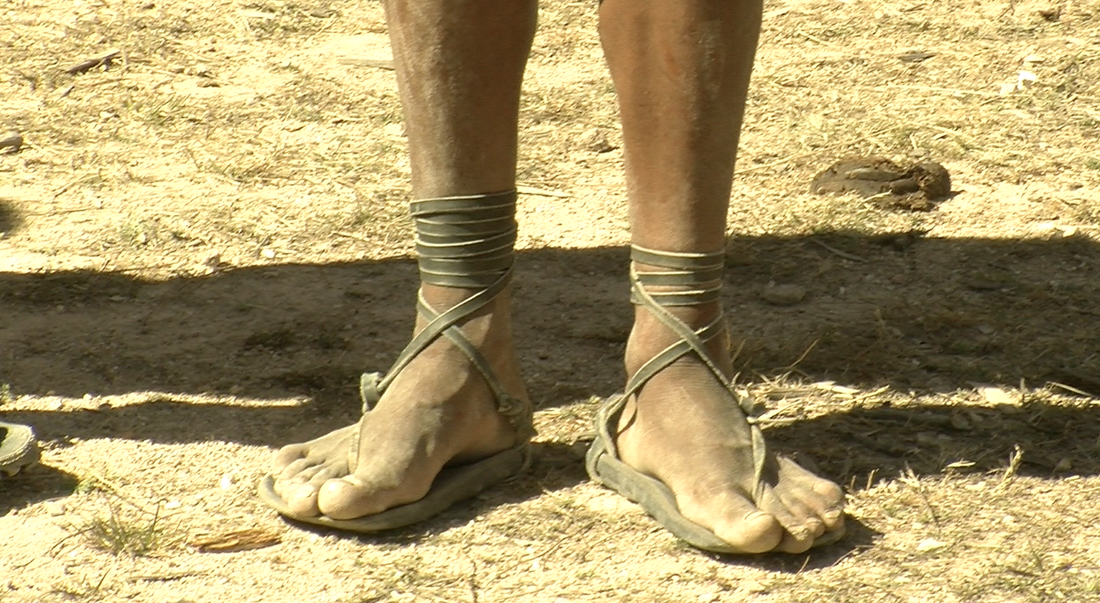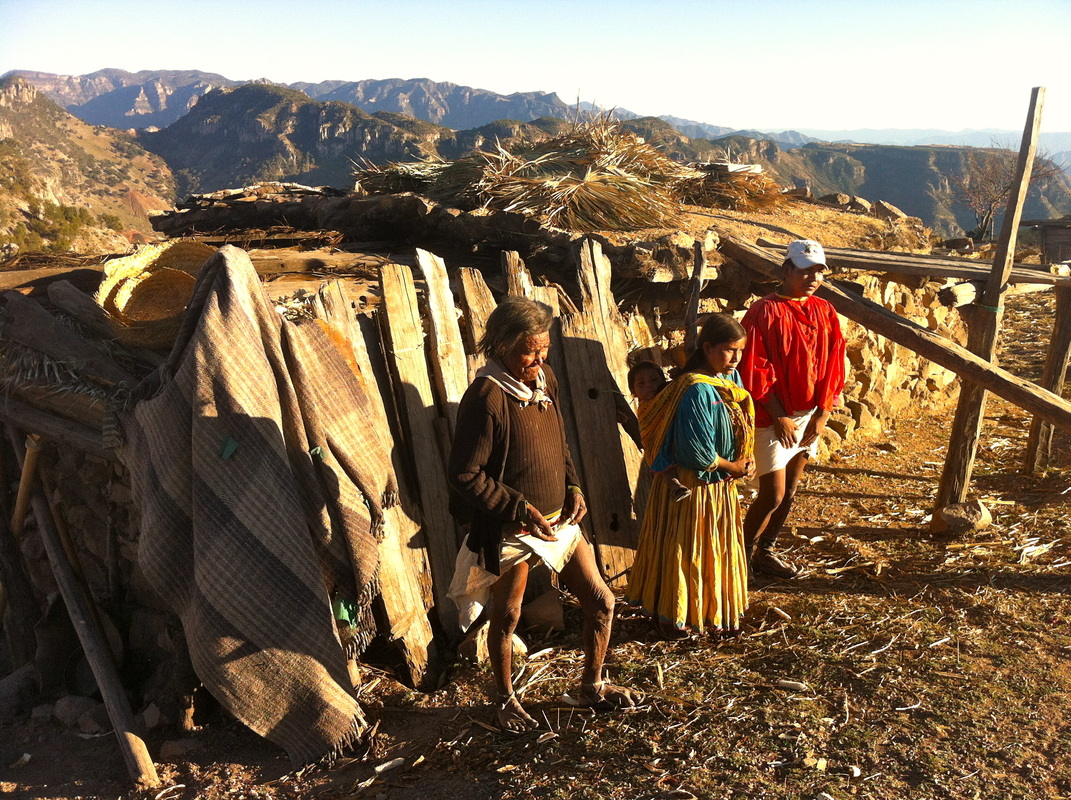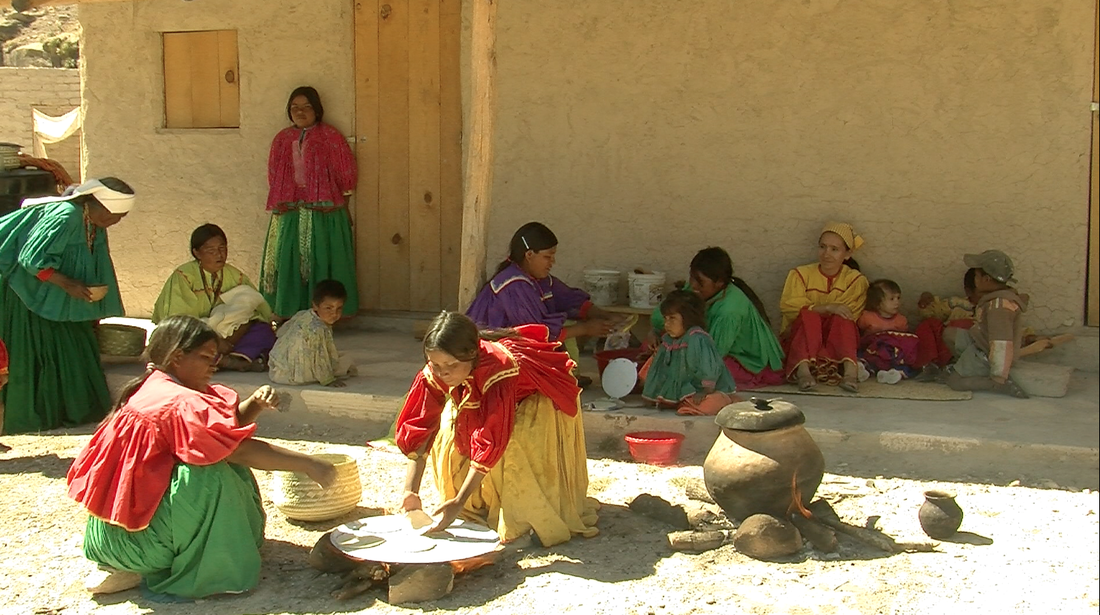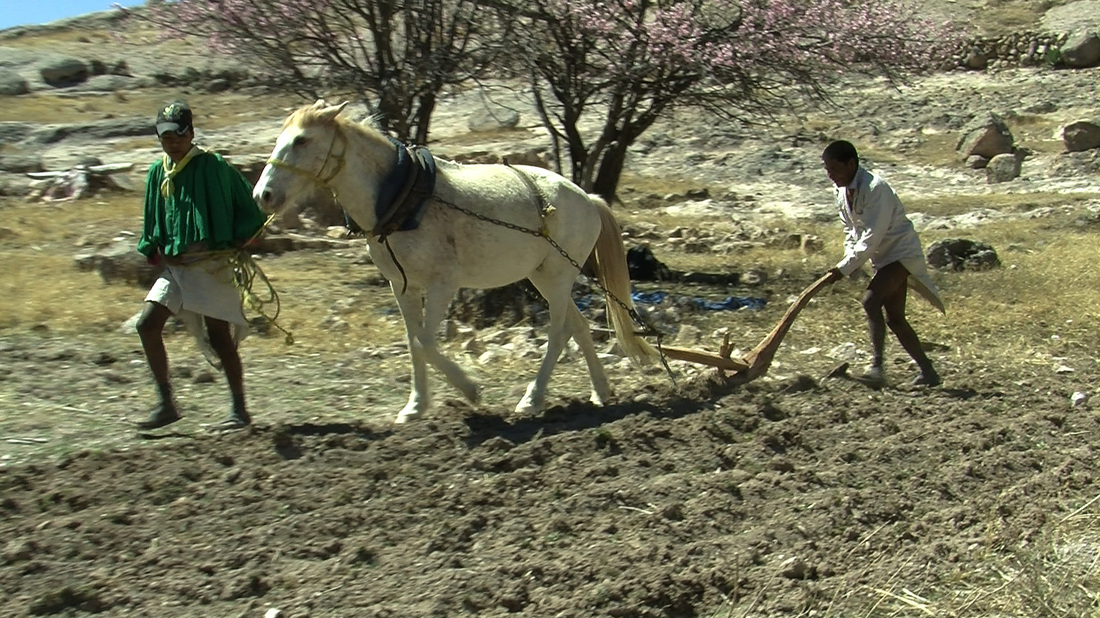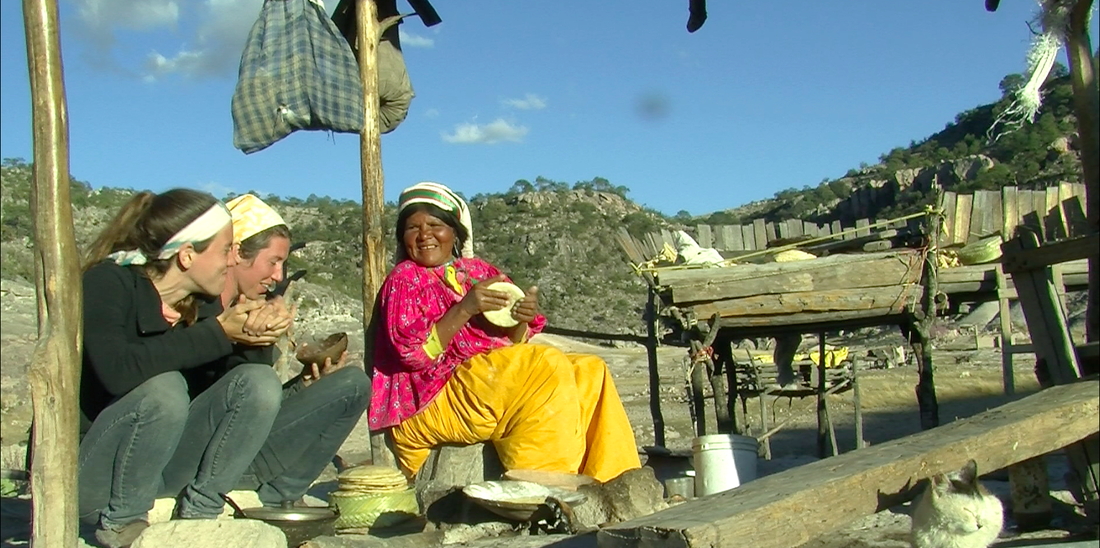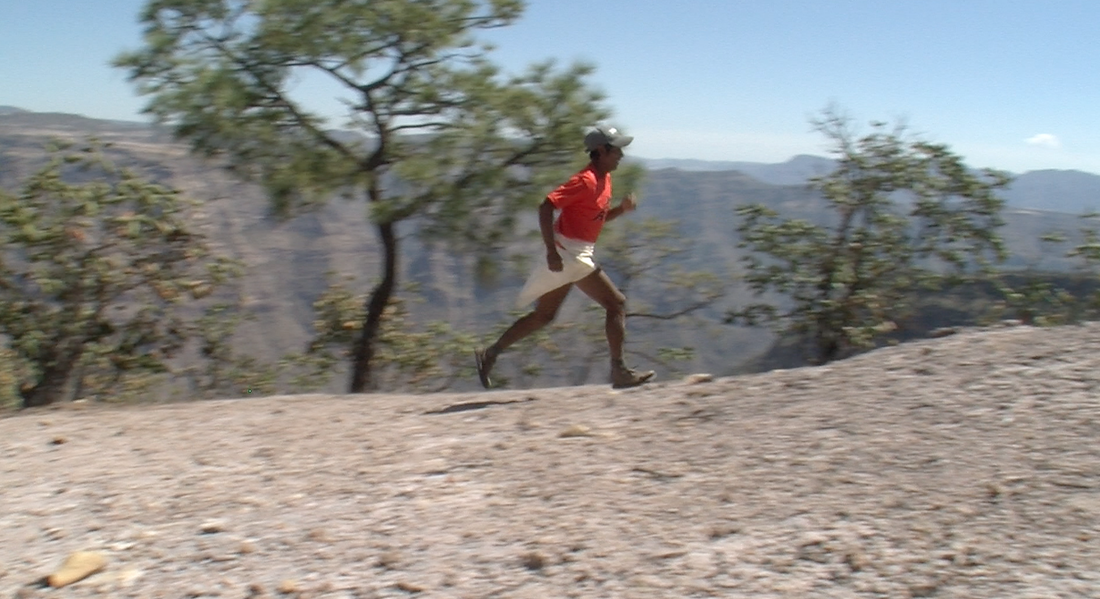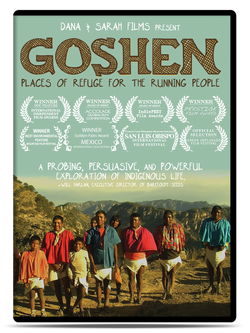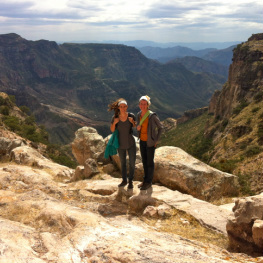 Thanks to many generous contributors, in March 2013 we began production of our documentary film Goshen. The filming location was in the remote depths of the Copper Canyons, Mexico. Although it was an unusually challenging filming endeavor, the footage of the Tarahumara people is stunning and we are very thankful for the life changing experience. The first location we were flown to in the Copper Canyons was a small Raramuri community called Rawarachi. Mark and Carmen Egolf have been in relationship with the families in the Rawarachi community over the past decade. They decided this would be the best location for us to begin filming Goshen. Without Mark and Carmen introducing us to this community, we would have never had the opportunity to meet this community. The rugged geography has kept them hidden and isolated from the outside world for many generations. The Raramuri men and women were strong, with dark sun bathed skin and shinny black hair that stood out vibrantly against their colorful clothing. Men and women of all ages curiously greeted us with a gentle touch of their fingers to the palms of our hands, accompanied by the softly spoken word “cuira” (pronounced kwee-da) meaning "hello" in Raramuri. 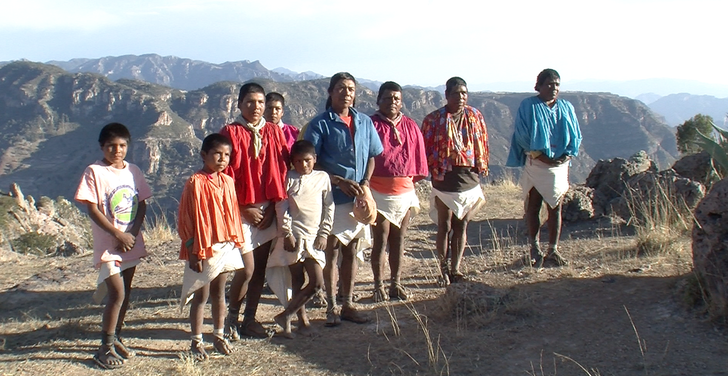 Tarahumara Men The first thing that broke the silent stark stares from the Raramuri people was the laughter and intrigue evoked from the Vibram-five finger shoes on our feet! Some exclaimed that they thought our feet were painted, or that we looked like we were wearing gloves on our feet, or that we looked like monkeys! We always responded with equal interest in their huraches (sandals) that all of the Raramuri people wore. They explained that their huraches were made from rubber scraps they salvaged from automobile tires, which were held on with think leather straps that wrapped up their ankles. The men, women, and children were able to walk and run extremely long distances in these minimal shoes on the most treacherous terrain. For the next few weeks we lived among this Raramuri community in an adobe hut that the tribe had built for Mark and his wife Carmen to stay in while they visited and worked with the community. The lifestyle of this community is beyond rustic. There is no electricity, no toilets, no running water--their drinking water is found from small natural springs providing just enough water to survive--and they cooked all of their meals over fires and slept in adobe huts. Although this seemed despairing, these living conditions are the only way of life the people of Rawarachi have ever known... therefore they lived with a refreshing satisfaction of life. When visiting their homes they always generously offered meals to us as their guests. Even though they often had very little food compared to what we are used to in our culture, they always shared it as though they had an abundance. We humbly accepted anything they offered from mouth watering corn tortillas, pinole, esquiate, bean stews, many variations of corn and beans, and of course the unforgettable ground nopales. Not only did the community offer eating meals communally, but their agricultural system was also rather communal. The farmers explained their difficulty growing in certain fields over the last few years due to the devastation of drought and plagues of insects. They elaborated that because of the widespread, diverse, geography of their community certain fields were unaffected by these issues, while others were wiped out completely. Their ethical solution to a problem like this is for the farmers whose crops were successful to share their harvest and seed with those who did not have any harvest. This was another beautiful example of how this community has self-sufficiently survived under such harsh growing and living conditions. It took an amazing amount of self control not to immediately pull out the cameras and begin filming everything that we were witnessing after anticipating documenting the Tarahumara people's lives and community for over a year. We were worried if they would even be open to us filming. One of the problems was that none of them had seen a video camera before. The other difficulty was the language barrier--only a few of the men spoke Spanish. After the first week, we began a conversation with one of the men of the tribe, explaining our desire to film their traditional ways of living, particularly related to food preparation. Later that afternoon, as we sat by a fire, he approached us. He stood, smiling and nodding at the fire then shyly asked “do you want to watch my wife make corn tortillas?” “Of course”, we retorted “should we bring our video cameras?” He responded, “Yes, of course” laughing at our over-excitement. This was our first filming opportunity and it was one of the most beautiful, meaningful experiences of our entire visit. From that moment on the entire community discussed how they would equally be involved, making sure not to exclude any family member of the community. We were amazed at their sense of unity and honor for one others equality of opportunity and decision making. Everyone in the community seemed to be full of life and excitement even to be part of this endeavor and to display the traditions and skills that they were most uniquely talented in. The remainder of our stay we would film from sun up to sun down. We witnessed aspects of their lives we never could have imagined having the opportunity to see. Everything seemed to flow so naturally from here on. By the end of our stay we had even had the oportunity to stay in another near by Raramuri village where famous Tarahumara runner, Arnulfo Quiremae lived with his family. We visited with Arnulfo and his family at their home and even had the privilege to film Arfnulfo running against the backdrop of the Copper Canyons. Near by Arnulfo’s lived the famous pianists, Romayne Wheeler, who had been living with this Tarahumara community for over 30 years. He kindly housed us in his awe inspiring home, overhanging the canyon walls. Romayne liked the idea of our film project so much he even allowed us to record him playing piano to use as part of our film's soundtrack. This couldn’t have been a more rewarding ending to our initially rough filming venture in Mexico.
Thanks for reading and continuing to support the production of Goshen!
4 Comments
|
Archives
July 2016
Filming SITEFilming location in the Copper Canyons, Mexico.
|

